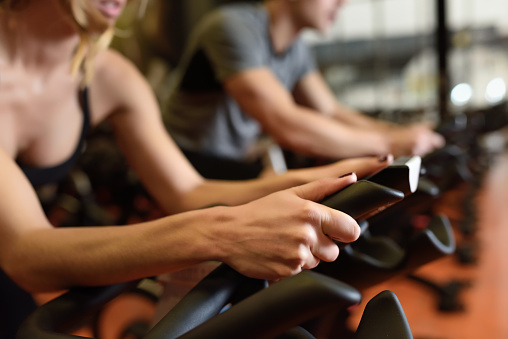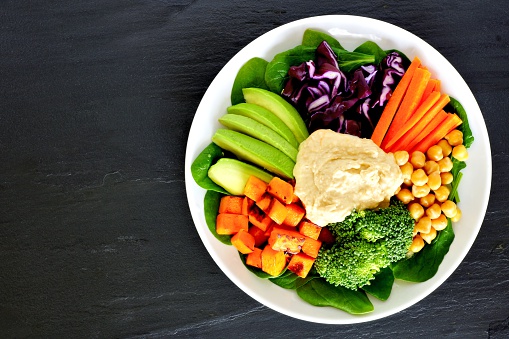How to Lose Body Fat While Retaining Lean Muscle Mass
Article posted in: Fitness
How to lose body fat, but not muscle: Probably the weight loss goal of the century. However, when most people try to find ways to lose weight, they jump on the treadmill or elliptical.
Studies can back this behavior up in misleading ways: In an eight-month study of 234 overweight people, researchers at Duke found that those who performed aerobic exercise lost 1.76 kilograms, while those who did a combination of aerobic and resistance exercise lost slightly less, 1.63 kilograms. A third group did resistance training without aerobic exercise, and they actually gained 0.83 kilograms during the study.
Here’s the rub: The aerobic-only group lost, on average, 0.10 kilograms of lean body mass—that is, they lost muscle. The cardio-and-strength group gained 0.81 kilograms of muscle, and the resistance-only group gained 1.09 kilograms of muscle—meaning that for the lifting only crowd, they lost fat overall, while gaining muscle.
Losing weight and gaining muscle at the same time, like the combo group did, looks great, however, it’s more than just flexing on the beach. If you want to be healthy, you want to lose weight (to lose body fat, specifically, that is) and preserve muscle. As you age, you’re already losing muscle mass: Both men and women suffer from sarcopenia, a loss in muscle mass, dropping as much as 30 percent of their lean tissue between the ages of 40 and 60. This loss of muscle slows metabolism, lowers testosterone levels and can result in reduced motor function.
Carrying fat’s even worse for you: If you carry your fat around your waist, your risk of heart failure can increase as much as 30 percent for every 10 centimeters of excess waist size. Maintaining muscle mass and prioritizing fat loss is crucial to having a longer, healthier, more active life. With all of that in mind, it’s no wonder you’re trying to figure out how to lose body fat while preserving your lean muscle mass!
How to Lose Body Fat, but Not Muscle:
Lifting will make you burn more calories.

Muscle mass can also help your continued weight loss efforts. In a 1999 study, two groups were put on a very low-calorie diet, eating just 800 calories per day. One group performed cardio exercise four days per week, while the other performed resistance training three days per week. After 12 weeks, the aerobic group had lost, on average, 37 pounds—27 pounds of fat and 10 pounds of muscle. The strength training group had lost 32 pounds, all from fat.
Here’s where it helps your weight loss diet journey: The strength training group was burning more calories than the cardio group at the end of the study. After the study, the cardio group was burning 210 fewer calories per day, while the strength training group was burning 63 more calories per day than they were at the start.
Consult your doctor before starting any fitness or weight loss program. Tell him or her that you’re trying to learn how to lose body fat while preserving lean muscle. Once you’re cleared to begin, concentrate on two concepts: “Progressive resistance” and training to failure. Progressive resistance boils down to progressing: Instead of going and doing the same weights for the same repetitions in every session, try to do a little more each time—whether it’s performing one more pushup than in your last workout, adding a pound or two to your bench press or doing one more set of squats this week than you did last week.
Training to failure is exactly what you’d expect: Performing the exercise until you can’t do another repetition with correct form. In a 2016 study published by the Journal of Applied Physiology, one group of men did sets of eight to 12 reps using 75-90 percent of their one-rep max—the maximum amount they could lift once. Another group lifted 30-50 percent of their one-rep max for 20-25 repetitions. Both groups did three sets of each exercise, with each set being performed to technical failure. After 12 weeks of this kind of training, both groups gained around the same amount of size and strength. The important part, the researchers concluded, was doing each set to technical failure.
The right kinds of cardio can help.

In the Duke study, those who did a combination of strength training and aerobic exercise lost weight, as they gained lean muscle. They accomplished this performing steady-state cardio exercise—going at a moderate pace throughout the workout.
You can turn up your fat burning by changing speeds. This method is called interval training, and refers to alternating high-intensity exercise with lower-intensity rest periods. In a 1994 study, subjects lost more fat with 15 weeks of interval training than other subjects lost in 20 weeks with steady-state work.
Your intervals don’t have to be crazy hard or crazy long to get results: Participants in another study did eight-second intervals for 20 minutes, three times per week, and lost four pounds of fat over the course of 12 weeks. To get the same fat loss benefit from steady-state cardio, researchers said you’d have to exercise for seven times as long!
Try these intervals to start: Using the cardio machine or method of your choice, warm up for two minutes at an easy pace. Then, speed up and perform the exercise at a perceived level of exertion of eight on a 10-point scale for just 15 seconds. Then, slow down and do the exercise at a three out of 10 rate for 30-60 seconds. Repeat this sequence—hard work, then easy work—six times. If this is too hard, start out working at the eight level for just 10 seconds. Over time, instead of adding more intervals, increase the amount of time you work, and reduce the time you rest. This will help teach your body how to lose body fat… not muscle.
It’s not the number of meals you eat.

Conventional wisdom has led bodybuilders and regular folks to eat lots of small meals throughout the day to improve fat loss. One of the ideas behind this is that eating more often increases the thermic effect of food. This refers to your body’s need to heat up every time you eat another meal, resulting in greater calorie burn than with larger, less frequent healthy meals.
And while studies suggest that frequent meals do correlate slightly to increases in fat-free mass (muscle) and a loss of fat, that’s not the only thing that matters.
What’s important, if you really want to know how to lose body fat, is that you’re eating at a caloric deficit—eating less each day than your body burns off. The researchers concluded that adherence to a weight loss plan that results in a calorie deficit is more important than meal frequency. If you find it easier to eat fewer calories by staying full with more meals, have four, five or six meals per day. If your weight loss eating works better with fewer meals, stick with that.
Need help getting that calorie deficit and still feeling satisfied? We have the perfect Nutrisystem plan for you!








